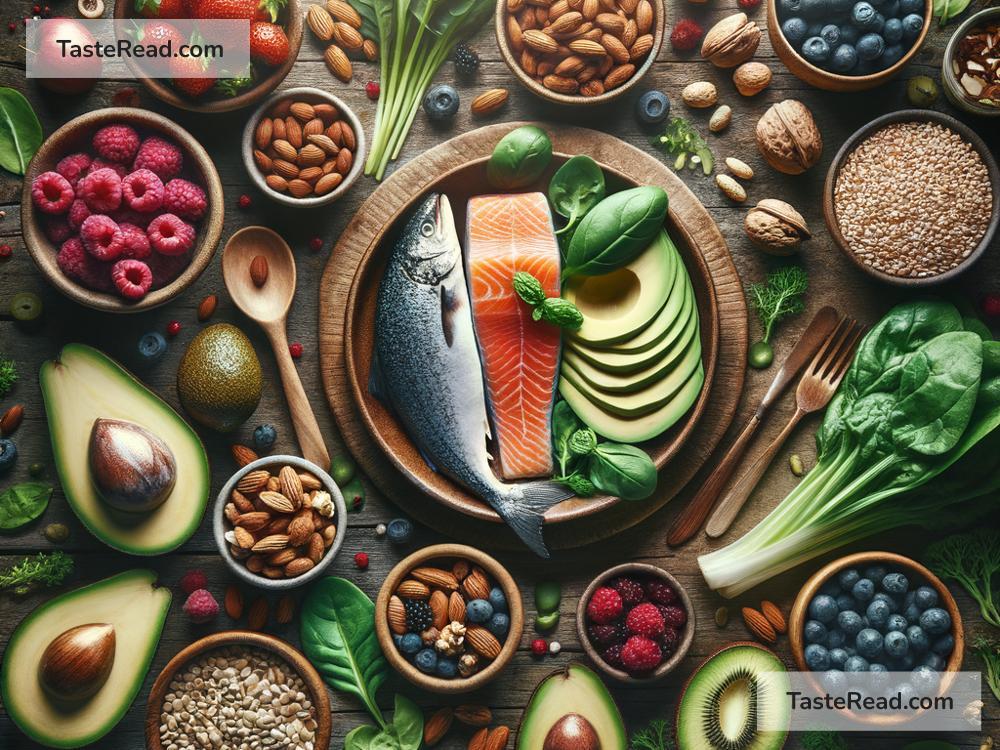Foods That Reduce the Risk of Metabolic Syndrome
Metabolic syndrome is a cluster of conditions that includes high blood pressure, high blood sugar, excess belly fat, and abnormal cholesterol or triglyceride levels. These conditions increase the risk of serious health problems like heart disease, stroke, and type 2 diabetes. Thankfully, what you eat can play a powerful role in reducing the risk of metabolic syndrome and improving your overall health. In this blog, we’ll explore simple, accessible foods that can help keep metabolic syndrome at bay.
What Is Metabolic Syndrome?
Before jumping into the foods that combat metabolic syndrome, it’s important to understand what it is. Metabolic syndrome isn’t a single disease but rather a set of risk factors. If you have three or more of these conditions, you may be diagnosed with metabolic syndrome:
- High blood pressure
- High fasting blood sugar
- Excess fat around the waist (abdominal obesity)
- Low levels of “good” cholesterol (HDL)
- High levels of triglycerides (a type of fat in your blood)
The good news is that lifestyle changes—like improving your diet—can help reduce the risk or manage the condition.
Foods That Fight Metabolic Syndrome
The foods listed below are not rocket science—they’re simple, wholesome, everyday foods that are easy to include in your meals. Let’s take a closer look!
1. Whole Grains
Whole grains are loaded with fiber, which helps control blood sugar levels and reduces cholesterol. Unlike refined grains (like white bread or white rice), whole grains digest more slowly, preventing spikes in blood sugar. Studies show that people who eat more whole grains are less likely to develop metabolic syndrome.
Examples of whole grains:
– Oats
– Brown rice
– Quinoa
– Whole-grain bread
Tip: Start your day with a bowl of oatmeal or replace white rice with brown rice for dinner.
2. Leafy Greens
Spinach, kale, and other leafy greens are rich in vitamins, minerals, and antioxidants. They’re especially high in magnesium, a mineral that helps control blood pressure and blood sugar. Leafy greens also have very few calories, making them great for managing weight.
Examples of leafy greens:
– Spinach
– Kale
– Swiss chard
– Romaine lettuce
Tip: Add spinach to your smoothies or salads and use kale as a base for stir-fries.
3. Fatty Fish
Fatty fish like salmon, mackerel, and sardines are packed with omega-3 fatty acids. These healthy fats reduce inflammation, improve cholesterol levels, and support heart health—all of which lower the risk of metabolic syndrome.
Examples of fatty fish:
– Salmon
– Mackerel
– Sardines
– Trout
Tip: Aim to eat fatty fish at least twice a week. Bake or grill salmon for a nutrient-rich dinner.
4. Nuts and Seeds
Nuts and seeds are rich in healthy fats, fiber, and protein. They also contain magnesium and antioxidants, which are known to reduce inflammation and improve cholesterol levels. Be sure to eat them in moderation since they’re calorie-dense.
Examples of nuts and seeds:
– Almonds
– Walnuts
– Flaxseeds
– Chia seeds
Tip: Snack on a handful of almonds or sprinkle chia seeds onto yogurt or oatmeal.
5. Berries
Berries like blueberries, strawberries, and raspberries are bursting with antioxidants that fight inflammation and support heart health. They also contain fiber, which helps regulate blood sugar levels.
Examples of berries:
– Blueberries
– Strawberries
– Raspberries
– Blackberries
Tip: Add berries to smoothies, oatmeal, or plain yogurt for a tasty treat.
6. Beans and Lentils
Beans and lentils are powerhouse foods full of fiber, protein, and complex carbohydrates. They help stabilize blood sugar and lower bad cholesterol levels while keeping you full for longer.
Examples of beans and lentils:
– Black beans
– Chickpeas
– Lentils
– Kidney beans
Tip: Use beans in soups, salads, or chili to make meals more satisfying and nutritious.
7. Healthy Fats
Not all fats are bad! Healthy fats from foods like avocados, olive oil, and nuts can actually lower bad cholesterol and improve heart health. They also reduce inflammation, which is a key contributor to metabolic syndrome.
Examples of healthy fats:
– Avocados
– Olive oil
– Nuts
– Seeds
Tip: Use olive oil as your go-to cooking oil and add sliced avocado to your salads or sandwiches.
8. Dark Chocolate (in Moderation)
Believe it or not, dark chocolate can be good for you! It contains antioxidants called flavonoids, which improve blood flow and reduce inflammation. Just make sure to choose dark chocolate with at least 70% cocoa and eat it in small amounts.
Tip: Enjoy a few squares of dark chocolate as an occasional treat.
What to Avoid
While eating the right foods can reduce your risk of metabolic syndrome, it’s equally important to avoid unhealthy foods. Limit sugary drinks, processed snacks, and foods high in saturated fats or trans fats. These can worsen blood sugar, cholesterol, and inflammation.
Final Thoughts
Metabolic syndrome doesn’t have to control your life. By making smarter food choices, you can protect your health and feel better every day. Focus on eating whole, nutrient-rich foods like whole grains, leafy greens, fatty fish, nuts, berries, and healthy fats. Along with regular exercise and good sleep, a balanced diet can help reduce your risk of metabolic syndrome and keep your body thriving.
Start small by swapping out unhealthy snacks for nuts or adding more leafy greens to your plate. Over time, these small changes can make a big difference in your health.
After all, your body deserves the best care you can give it—including the foods you choose to eat!

